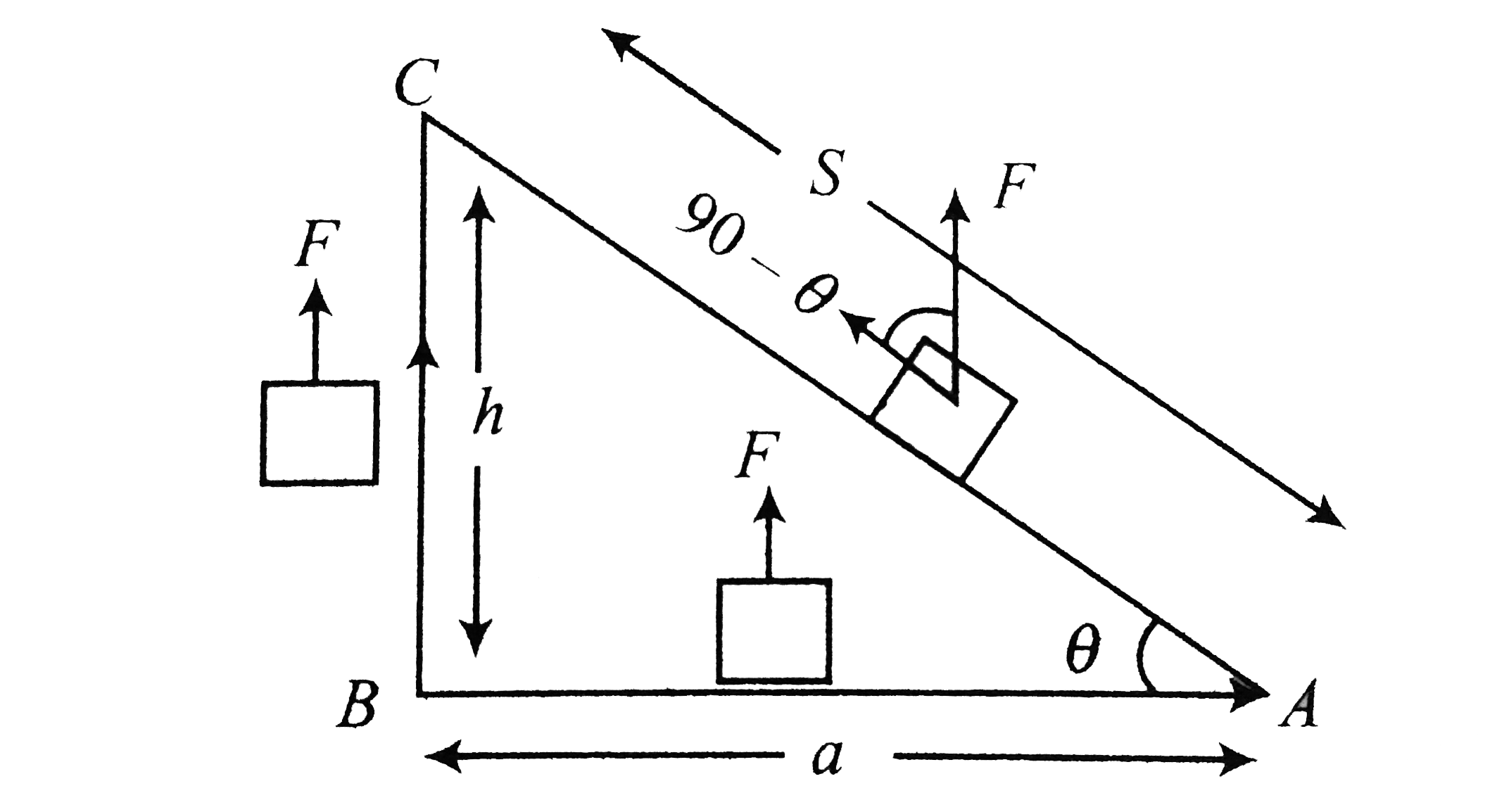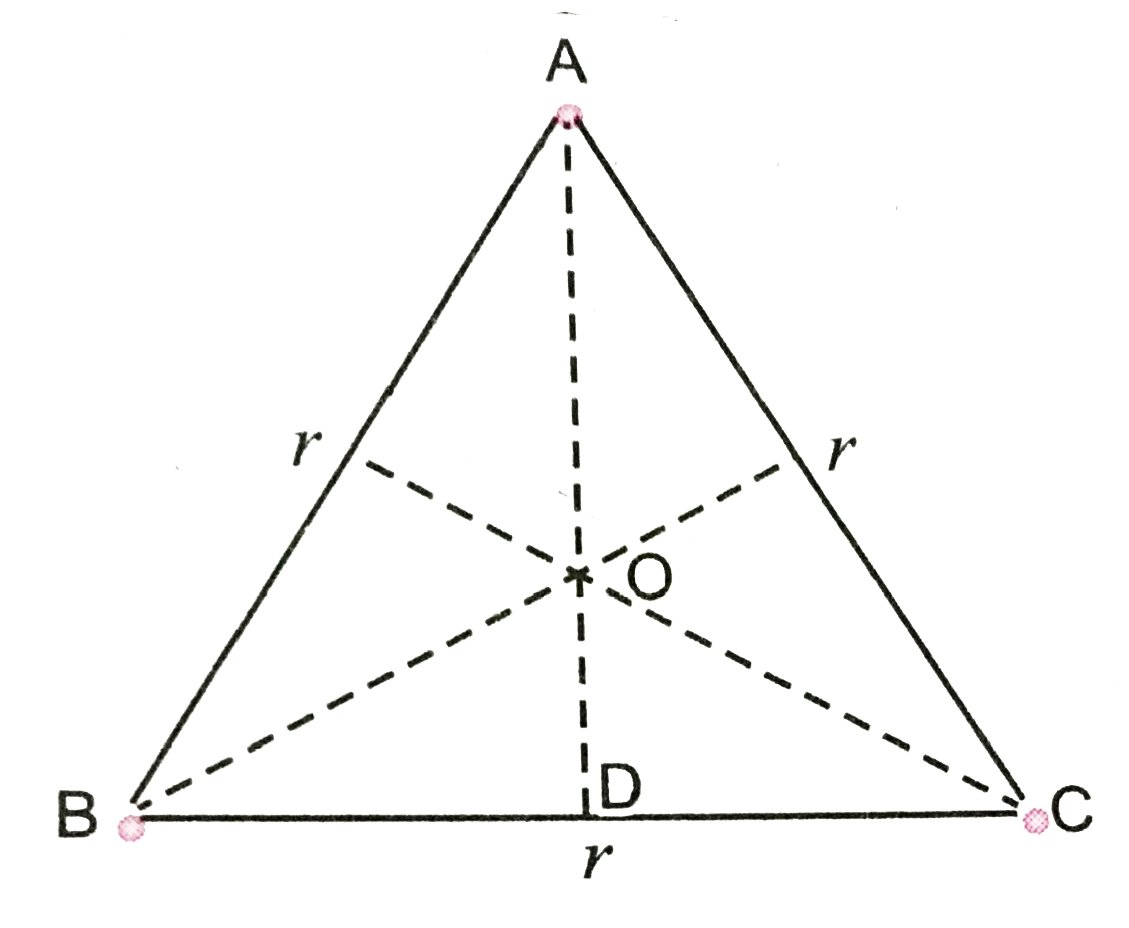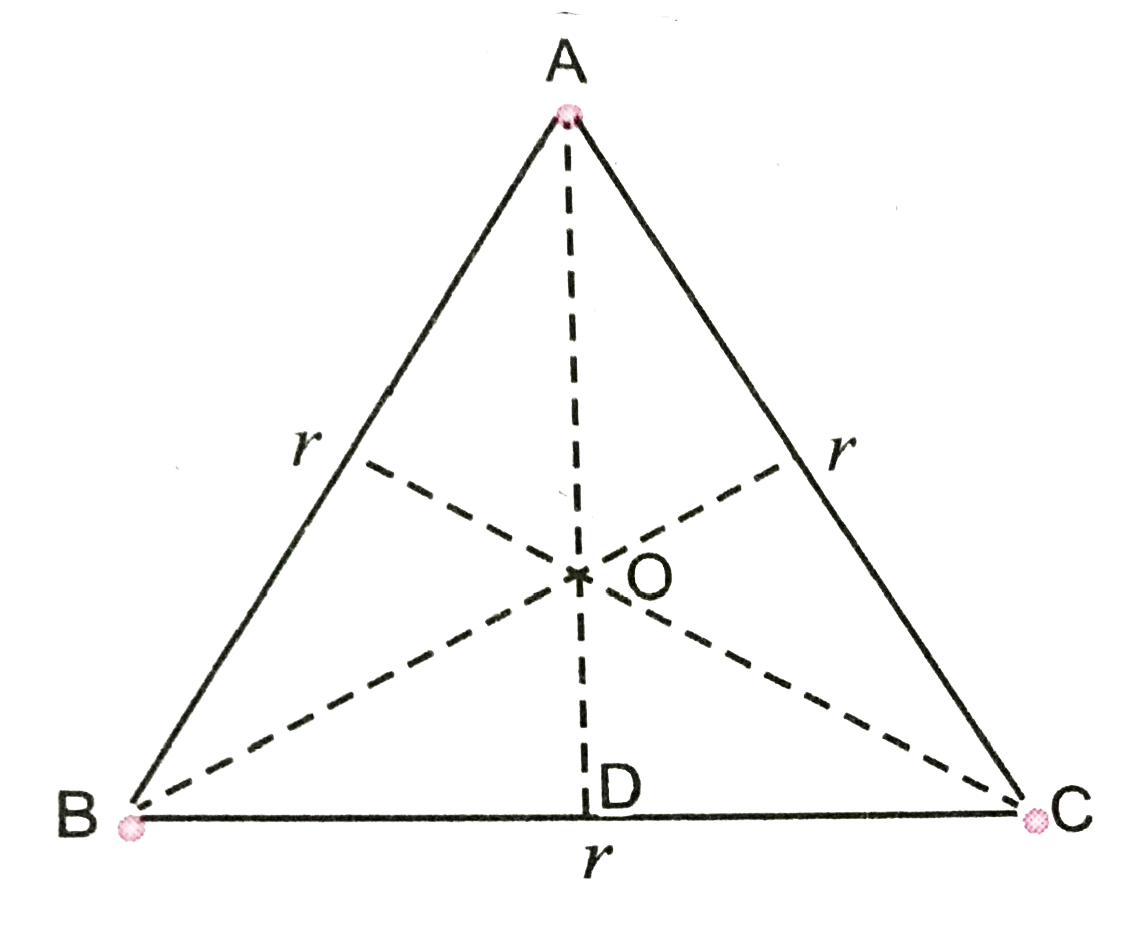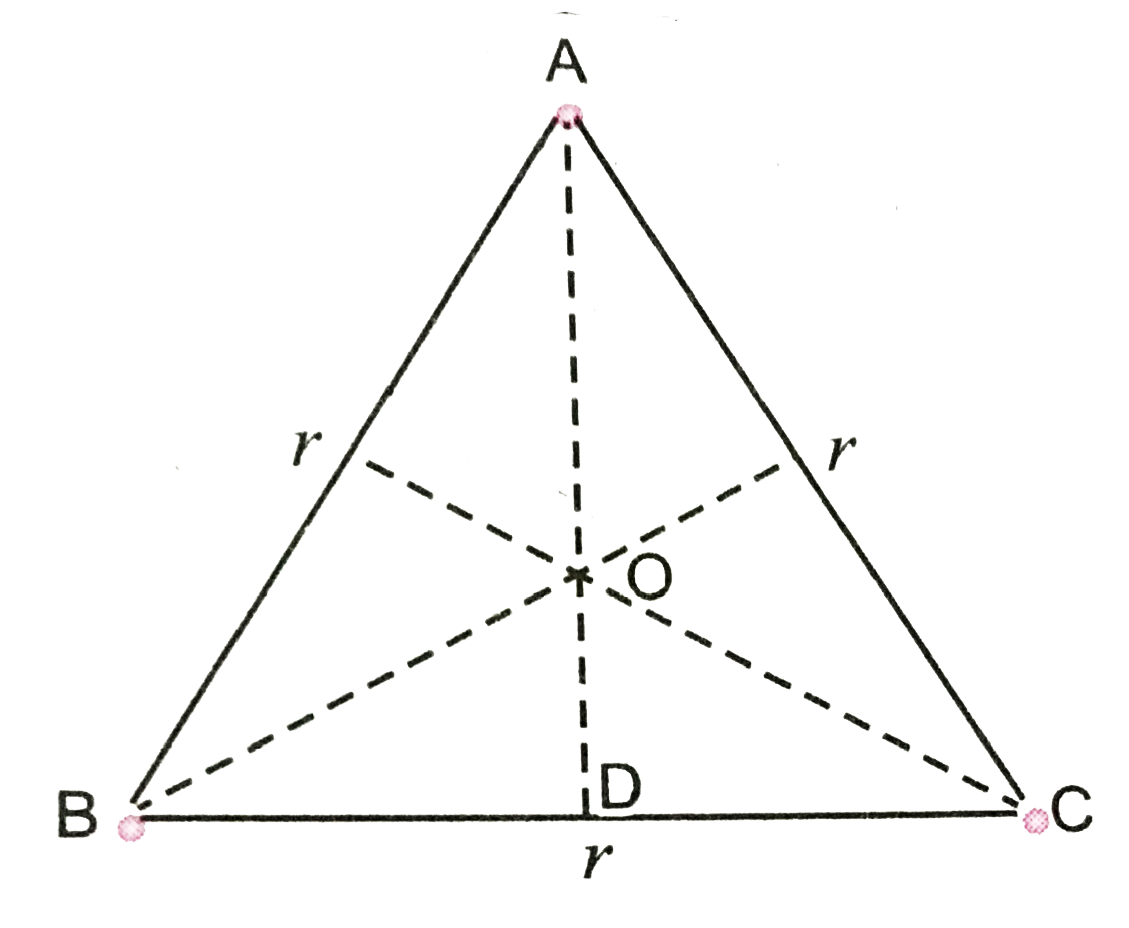If we shift a body in equilibrium from A to C in a gravitational field via path AC or ABC,

(a) The work done by the force →F for both paths will be same
(b) WAC>WABC
(c) WAC<WABC
(d) None of the above
The correct Answer is:A
For the path AC,
WAC=Fscos(90∘−θ)=mgsinθ=mgh ( ∵F=mg)
For path AB, WAB=Facos90∘=0
For path BC, WBC=Fhcos0∘=mgh
So that WAB+WBC=mgh=WAC
i.e., WABC=WBC
Topper's Solved these Questions
- WORK, POWER & ENERGYBOOK - CENGAGE PHYSICSCHAPTER - WORK, POWER & ENERGYEXERCISE - Multiple Correct
25 Videos
- WORK, POWER & ENERGYBOOK - CENGAGE PHYSICSCHAPTER - WORK, POWER & ENERGYEXERCISE - Linked Comprehension
55 Videos
- WORK, POWER & ENERGYBOOK - CENGAGE PHYSICSCHAPTER - WORK, POWER & ENERGYEXERCISE - Subjective
23 Videos
- VECTORSBOOK - CENGAGE PHYSICSCHAPTER - VECTORSEXERCISE - Exercise Multiple Correct
5 Videos
Similar Questions
In which condition a body lying in gravitational field is in stable equilibrium ?
View SolutionAssertion : Gravitational potential is maximum at infinite.
Reason : Gravitational potential is the amount of work done to shifting a unit mass from infinity to a given point in gravitational attraction force field.
View Solution
Knowledge Check
A body is kept in a gravitational field. Its binding energy
Awill be zero, if it is at restBwill start increasing its speed is increasedCwill remain constant for any speedDwill be maximum if it is at restThere are three identical point mass bodies each of mass m locted at the vertices of an equilateral triangle with side r. They are experting gravitational force of attraction on each other, which can be given by Newton's law of gravitaiton. Each mass body produces its gravitational field in the surrounding region. the magnitude of gravitational field at a point due to a point mass body is the measure of gravitaitonal intensity at that point. The gravitational potential at a point in a gravitational field is the amount of workdone in bringing a unit mass body infinity to the given point without acceleration.

Answer the following questions :
Magnitude of gravitational field at the mid point D of arm BC of triangle ABC isAGm2r2BGm3r2C3Gmr2D4Gm3r2Assertion: The centre of gravity of a body coincides with its centre of mass only if the gravitational field does not vary form one part of the body to the other.
Reason: Centre of gravity is independent of the gravitational field.AIf both the assertion and reason are true and reason is a true explantion of the assertion.BIf both the assertion and reason are true but the reason is not true the correct explantion of the assertion.CIf the assertion is true but reason falseDIf both the assertion and reason are false.
Explain gravitational potential at a point and gravitational potential energy of a body in a gravitational field. Establish a relation between them.
View SolutionThere are three identical point mass bodies each of mass m locted at the vertices of an equilateral triangle with side r. They are experting gravitational force of attraction on each other, which can be given by Newton's law of gravitaiton. Each mass body produces its gravitational field in the surrounding region. the magnitude of gravitational field at a point due to a point mass body is the measure of gravitaitonal intensity at that point. The gravitational potential at a point in a gravitational field is the amount of workdone in bringing a unit mass body infinity to the given point without acceleration.

Answer the following questions :
Work done in taking one body far away from the other two bodies is
View SolutionThere are three identical point mass bodies each of mass m locted at the vertices of an equilateral triangle with side r. They are experting gravitational force of attraction on each other, which can be given by Newton's law of gravitaiton. Each mass body produces its gravitational field in the surrounding region. the magnitude of gravitational field at a point due to a point mass body is the measure of gravitaitonal intensity at that point. The gravitational potential at a point in a gravitational field is the amount of workdone in bringing a unit mass body infinity to the given point without acceleration.

Answer the following questions :
The magnitude of the gravitational force on one body due to other two bodies is
View SolutionThere are two bodies of masses 1 kg and 100 kg reporated by a distance 1m. At what distance from the smaller body, the intensity of gravitational field will be zero
View SolutionThere are two bodies of masses 100 kg and 10000 kg separated by a distance 1 m . At what distance from the smaller body, the intensity of gravitational field will be zero
View Solution
